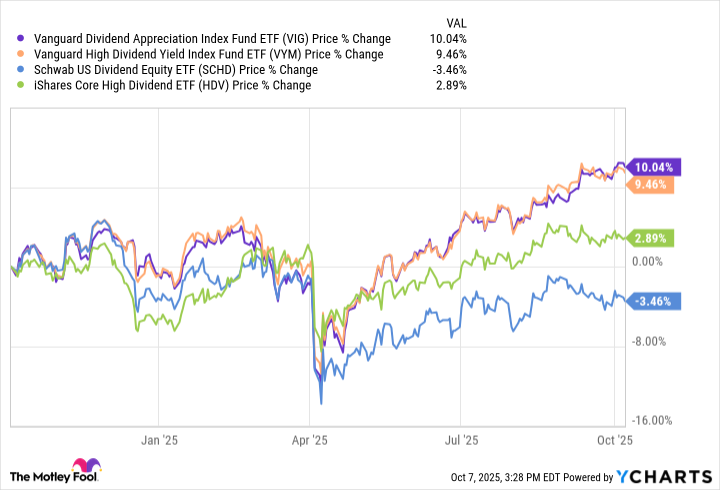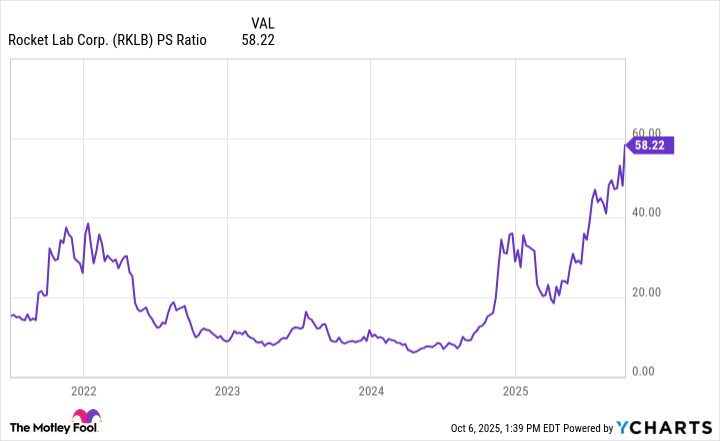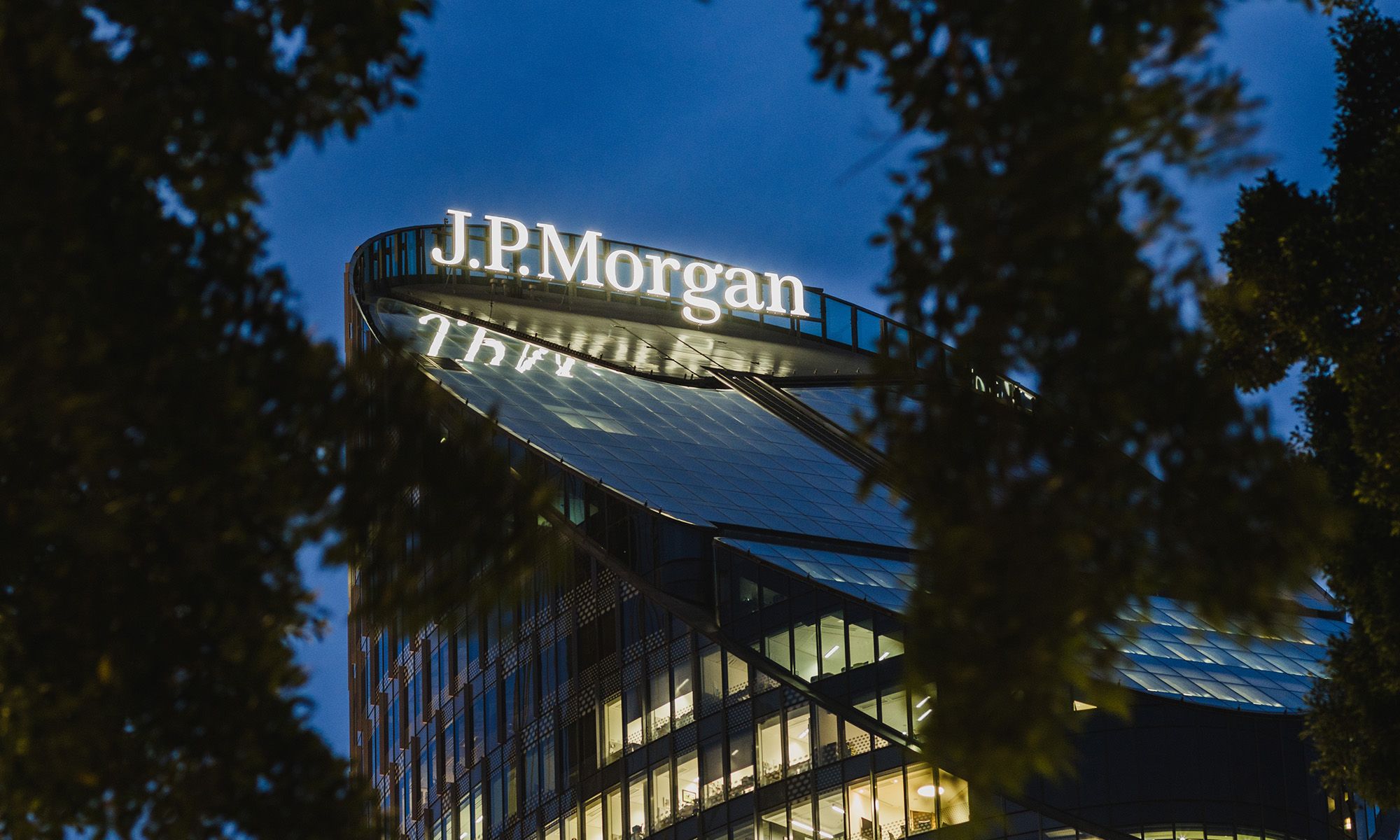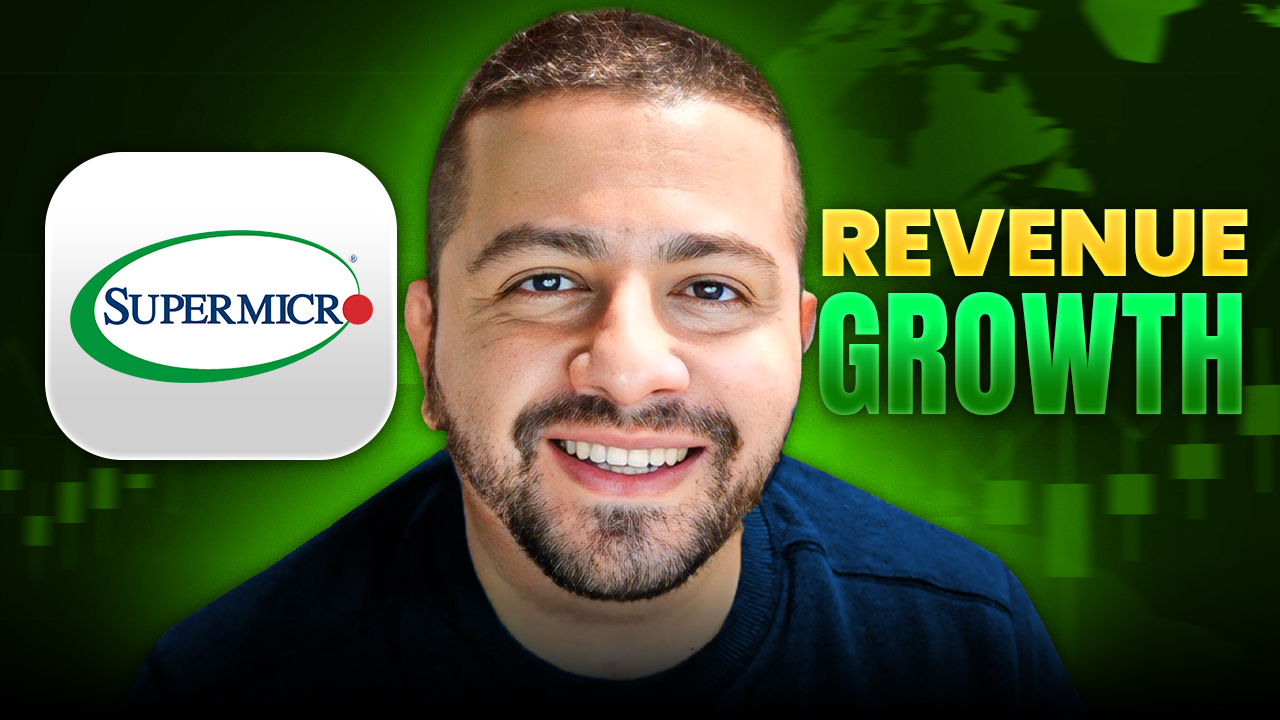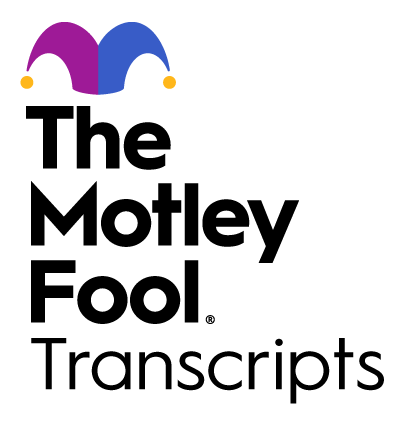
Image source: The Motley Fool.
DATE
Thursday, Oct. 9, 2025, at 5:00 p.m. ET
CALL PARTICIPANTS
- President and Chief Executive Officer — Michelle Gass
- Chief Financial and Growth Officer — Harmit Singh
- Head of Investor Relations — Aida Orphan
Need a quote from a Motley Fool analyst? Email [email protected]
RISKS
- Tariff impact — Harmit Singh stated, “Our updated guidance reflects the latest tariff rate, which includes 30% for China and an increase to approximately 20% for the rest of the world, compared to 50 basis points previously,” and quantified a resulting 20 basis point impact on gross margin and a 2 to 3¢ reduction in adjusted diluted EPS.
- Gross margin headwind in fiscal fourth quarter — Management forecasts a roughly 100 basis point contraction in gross margin for the fiscal fourth quarter ended Nov. 30, 2025, driven by tariffs and the absence of a fifty-third week.
TAKEAWAYS
- Net revenue growth — Net revenue increased 7% in the fiscal third quarter ended Aug. 31, 2025, with international markets contributing approximately 75% of the growth and the US accounting for the rest.
- Direct-to-consumer (DTC) channel — DTC sales rose 9%, with e-commerce up 16% and store comps delivering high single-digit growth in the fiscal third quarter; DTC now accounts for over 40% of the US business as of the fiscal third quarter.
- Gross margin — Gross margin reached a record 61.7%, up 110 basis points, more than offsetting an 80 basis point tariff headwind in the fiscal third quarter; approximately 50 basis points of margin uplift came from foreign exchange in the same period.
- Adjusted EBIT margin and EPS — Adjusted EBIT margin reached 11.8%, and adjusted diluted EPS was 34¢, both “ahead of our expectation” in the fiscal third quarter, according to Harmit Singh.
- Wholesale channel — Global wholesale net revenues grew 5% on an organic, continuing operations basis in the fiscal third quarter, with signature business up double digits and women’s outperforming across key partners, while US wholesale rose 2%.
- Regional trends — Asia net revenues accelerated 12% with double-digit DTC and wholesale gains; the Americas rose 7%, and Europe rose 3%, with UK performance described as “very strong,” based on organic net revenues in the fiscal third quarter.
- Women’s and tops segments — Levi Strauss women’s business grew 9%, men’s grew 5%, and tops increased 9%, with men’s tops up 10% and women’s tops up 8%, all on an organic basis in the fiscal third quarter.
- Shareholder returns — Returned $151 million to shareholders in the fiscal third quarter (up 118%), bringing year-to-date returns to $283 million and exceeding the annual payout target.
- Inventory — Inventory dollars grew 12% and units increased 8% in the fiscal third quarter, driven by build-up ahead of the holiday season and higher product costs from tariffs; as of the fiscal third quarter, 70% of US holiday inventory was in place.
- Guidance raised — Management now expects full-year reported net revenue growth of approximately 3% and organic net revenue growth of approximately 6%, with gross margin projected to expand 100 basis points and adjusted EBIT margin targeted at 11.4%-11.6% for the fiscal year ending Nov. 30, 2025.
- Beyond Yoga — Beyond Yoga is expected to end the year up low teens versus the prior year, with new stores opening in Boston, Houston, and two more in Northern California, bringing the total store count to 14.
- SKU productivity — The company reduced SKUs by about 15% compared to last year, achieved a 20% increase in productivity per SKU, and raised the proportion of globally common SKUs to 40% as of the 2025 season.
SUMMARY
Management reported four consecutive quarters of high single-digit organic revenue growth on a continuing operations basis, attributing broad-based performance to both DTC and wholesale channels, as well as geographic and gender diversification. Levi Strauss (LEVI -10.60%) maintained category leadership across men’s and women’s globally, with market share gains in youth premium and strong unit-driven growth. Pricing actions and reduced promotions were cited as gross margin drivers, while higher performance-based compensation and ongoing distribution center transitions weighed on SG&A in the fiscal third quarter. Upcoming tariff increases and the absence of a fifty-third week presented headwinds for the remainder of the year, although operational efficiencies and supply chain mitigation strategies were set to help offset pressures.
- Harmit Singh indicated, “gross profit dollars are up $220 million, and SG&A is up $126 million” year-to-date, reflecting operational leverage.
- Michelle Gass detailed that “tops grew 9% overall for the quarter, 10% year-to-date,” on an organic, continuing operations basis in the fiscal third quarter, with a strategic goal to move the tops-to-bottoms sales ratio closer to 1:1.
- The company invested purposefully in inventory to support the holiday season and cited 70% readiness of required US inventory as of the fiscal third quarter call.
- Harmit Singh confirmed customer and consumer demand remained resilient in the face of selective pricing increases, with no observable pullback thus far.
- Growth in DTC and e-commerce channels is expected to continue, with the aim of expanding e-commerce to 15% of total business from the current 9% (as referenced in the company’s fiscal third quarter earnings call).
INDUSTRY GLOSSARY
- DTC (Direct-to-consumer): Sales strategy where the company sells products directly to end customers through owned stores or digital channels, bypassing wholesale intermediaries.
- UPT (Units per transaction): Operational metric tracking the average number of items sold per customer transaction.
- AUR (Average unit retail): Average selling price per unit over a given period, excluding markdowns and promotions unless otherwise stated.
- SKU (Stock keeping unit): Unique identifier for a specific product variant, used for inventory and productivity management.
- Sell-in/Sell-through: ‘Sell-in’ refers to goods sold by Levi Strauss to its wholesale retail partners; ‘sell-through’ measures the rate at which those goods are sold by partners to end consumers.
- ASR (Accelerated share repurchase): A program in which a company repurchases a large block of its own shares swiftly, often structured via agreement with a financial intermediary.
- Red Tab / Blue Tab / Signature: Levi Strauss brand segmentation: Red Tab denotes Levi’s core denim, Blue Tab reflects the premium collection, and Signature targets value-focused consumers.
Full Conference Call Transcript
Aida Orphan: For our 2025. Joining me on today’s call are Michelle Gass, our President and CEO, and Harmit Singh, our Chief Financial and Growth Officer. We’d like to remind you that we will be making forward-looking statements based on current expectations, and those statements are subject to certain risks and uncertainties that could cause actual results to differ materially. These risks and uncertainties are detailed in our reports filed with the SEC. We assume no obligation to update any of these forward-looking statements. Additionally, during this call, we will discuss certain non-GAAP financial measures that are not intended to be a substitute for our GAAP results.
Definitions of these measures and reconciliations to their most comparable GAAP measure are included in our earnings release available on the IR section of our website, investors.levistrauss.com. Note that Michelle and Harmit will be referencing organic net revenues or constant currency numbers unless otherwise noted, and the information provided is based on continuing operations. Finally, this call is being webcast on our IR web, and a replay of this call will be available on the website shortly. Today’s call is scheduled for one hour, so please limit yourself to one question at a time to give others the opportunity to have their questions addressed. And now I’d like to turn the call over to Michelle.
Michelle Gass: Thank you, and welcome, everyone. What I’ll share today builds on the themes I’ve been emphasizing this year as we pivot to become a DTC-first, head-to-toe denim lifestyle retailer. The consistent execution of our strategic priorities is driving a meaningful inflection in our financial performance. And today, I’m pleased to share that we delivered another very strong quarter with upside across the P&L, giving us the confidence to raise our full-year revenue and EPS guidance. In Q3, we delivered our fourth consecutive quarter of high single-digit organic revenue growth. Strength was once again broad-based across our business, including DTC and wholesale, international and domestic, women’s and men’s, and tops and bottoms.
Our growth was led by continued strong sales and profitability in our direct-to-consumer channel, up 9%, fueled by strong comp growth as well as solid performance in global wholesale. Our largest market, the US, grew 3%, and our international business was up 9%, led by an acceleration in Asia. And we continue to see robust performance in our core as well as outsized growth in our key focus areas like women’s and tops. The results we’ve delivered this quarter against an increasingly complex backdrop are yet another proof point that our strategies are working. Looking ahead, there are several factors that give me even more conviction that our momentum will continue.
First, our narrowed focus enables us to maximize the full potential of the Levi’s brand. We will continue to build momentum through impactful marketing campaigns, strategic partnerships, and innovative collaborations, ensuring that the brand remains firmly at the center of culture. Second, the total addressable market for denim is large and growing, as consumer preferences continue to shift towards casualization. As the definitive market leader, we are well-positioned to take advantage and drive growth. Third, our denim leadership puts us in a prime position to define and own head-to-toe denim lifestyle, further expanding our addressable market. As we drive this momentum forward, we’ll continue to deliver an innovative and robust product pipeline across genders and categories.
Fourth, our DTC-first strategy is bringing us closer to the consumer and generating consistent and significant growth, while we have also stabilized and grown our wholesale business. Both channels are seeing strong improvements in profitability. Fifth, while international already comprises nearly 60% of our total business, there are still untapped opportunities for us to grow, particularly in Asia, where our business has momentum, and the opportunity for continued expansion is considerable. Underpinning all of this is our culture of performance, with a sharpened focus on operating with rigor and executing with excellence, from go-to-market efficiencies and more productive store operations to end-to-end supply chain improvement.
I will now turn to highlights from the third quarter in the context of our strategies. All numbers that Harmit and I will reference are on an organic, continuing operations basis. Let’s start with our first strategy, being brand-led. Levi’s had another strong quarter of growth. In the quarter, we launched the final chapter of the reimagined campaign with Beyoncé. This campaign delivered as intended, fueling momentum across the business, specifically driving growth in our Levi’s women’s business, up 12% year-to-date. In August, we debuted our new global campaign starring Shabu, underscoring our relevancy and authenticity with men. The campaign showcases our most iconic products, the 501, the trucker jacket, and the western shirt.
And we’re pleased with how this campaign is being received by our fans. In addition, we also cultivated enthusiasm for the brand through a broad range of collaborations, including a joint collection with Nike, fusing Levi’s heritage denim craftsmanship with Nike’s athletic sneaker culture. Our collaborations generate brand heat and introduce Levi’s to new consumers. And just this week, we launched a special collection with Toy Story, in celebration of their thirtieth anniversary. Turning to product, our evolution to a head-to-toe denim lifestyle retailer continues to gain momentum, all while strengthening our position as the global authority in denim.
Our Levi’s women’s business continues to deliver outsized growth, up 9% in Q3, while our leading Levi’s men’s business grew a solid 5%. Driven by our diversified fit, we saw strong growth in our bottoms business, which was up 6%. We’re continuing to inject newness into the looser fit trend, with the new baggy utility silhouettes for him, and the launch of our baggy dad barrel for her. And we’re driving a revival in low rise with our low and super low collection of fits, which are delivering strong growth. As we evolve into denim lifestyle, we’re making meaningful progress on our seasonally relevant assortments as consumers look for more buy now, wear now products.
Following last year’s reset, tops continue to drive notable growth, up 9% with strength across women’s and men’s. For the quarter, our shorts business delivered strong growth across genders. We continue to infuse newness into the assortment through fit and fabric innovation, from our linen blend styles to the launch of the 501 curve. And with respect to our premiumization efforts, we began to roll out our elevated Blue Tab collection to Europe in early September, following a successful launch in Asia and the US earlier this year. Blue Tab merges Levi’s iconic aesthetic with a refined quality and thoughtful Japanese craftsmanship. Looking to the holiday season, we are well-positioned with the right merchandise assortment and the right marketing campaign.
We’re expanding the range of occasions and amplifying the many ways that fans can embrace our denim lifestyle assortment through elevated fabric, textures, and embellishments. We’re excited to showcase Levi’s through a fresh lens that reflects the season’s full spectrum of style. Now shifting to our strategy to be DTC-first. Global direct-to-consumer sales were up 9%, driven by strong performance in both our stores and online. We generated high single-digit comp growth fueled by higher UPT, AUR, and full-price selling as our expanded denim lifestyle assortment continues to resonate with our consumers around the world.
And as we continue to grow our DTC channel, we remain focused on doing so profitably, with our productivity initiatives resulting in more than 400 basis points of margin expansion in the quarter. We’re pleased with the strong results from our store optimization initiative, which have improved both the consumer experience and store productivity. We’ve enhanced our in-store lifestyle merchandising to make the environment more inspiring and shoppable, highlighting our broader assortment of head-to-toe looks. We’ve also been focused on improving our assortment planning and life cycle management, resulting in lower promotions and higher full-price selling. Additionally, we’re in the process of rolling out a new global selling model for our store team.
Which, coupled with our enhanced labor scheduling system, improving the consumer experience and delivering operational efficiencies. We had another quarter of very strong growth in e-commerce, up 16%, driven by an increase in traffic across all segments. We expect e-commerce to continue to be our fastest-growing channel on the path to comprising 15% of our total business, up from just 9% today. In our wholesale channel, net revenues were up 5%, reflecting growth across all segments. In the US, the Levi’s brands were up 2% as we continue to invest in top doors and expand and elevate our assortment.
Western Wear is core to who we are, and we’re pleased to have recently expanded our product assortment with Boot Barn and gained new distribution at Cavender’s. We also see opportunities to increase our penetration with premium and specialty accounts as we broaden and elevate our lifestyle assortment. Now turning to our third strategy, powering the portfolio. Our international business grew 9% in Q3. Asia accelerated in the quarter, driven by double-digit growth in key markets like India, Japan, Korea, and Turkey. I recently visited several stores across India, Korea, and Japan, and it is clear that consumers are responding to the work we’ve done to ensure the best expression of our denim lifestyle assortment.
Japan, in particular, is a market with a very high bar for denim. We’ve been investing in Japan over the past decade, transitioning the market from primarily a wholesale business to now close to 75% DTC. Walking our stores in Nagoya, Shinjuku, and Harajuku, some of our highest volume stores in the world, you’ll see the fullest and most premium expression of the Levi’s brand. Up almost 50% since 2019, and continuing to gain momentum, we remain optimistic about future opportunities in Japan, and we will replicate our successful playbook in this market across the globe. Beyond Yoga was up 2%, and DTC was up 23%, driven by comps, new doors, and e-commerce.
Growth in DTC was offset by a decline in wholesale as the team focuses on higher quality sales in the channel. Looking to Q4, we have additional stores opening in Boston, Houston, and two more stores in Northern California, bringing our total store count to 14. We expect Beyond Yoga to end the year up low teens versus prior year. In closing, we delivered another standout quarter with sales and earnings growth that positions us to increase our outlook for the year. We are fully prepared and well-positioned for holiday, as we enter the season with momentum despite an increasingly uncertain external backdrop.
We have several tailwinds that give me confidence in not only delivering a strong finish to 2025 but also another strong year in 2026. Finally, I’d like to thank our incredible, talented, and passionate team for driving our transformation into the world denim lifestyle leader and delivering outstanding service to our fans every day. And with that, I will turn it over to Harmit to provide a financial overview of the quarter and our expectations for the remainder of the year.
Harmit Singh: Thanks, Michelle. In quarter three, we delivered strong financial results, exceeding expectations across sales, gross margin, EBIT margin, and EPS. We remain focused on establishing a strong track record of consistent execution and results. The strategic transformation across our organization has enabled us to evolve into a higher-performing company with stronger revenue growth, expanded margin, improved cash flows, and higher returns on invested capital. Given the outperformance in quarter three and continued strong trend, we are also raising our revenue and EPS outlook for the year, despite incorporating higher tariffs than assumed in our previous guidance. Now turning to our quarter three results. Net revenue grew 7%, reflecting the power of our diversified business model.
International markets drove approximately 75% of our growth, and the US contributed 25%. This international strength reflects our continued expansion and brand resonance in key markets globally, while our US business maintains solid underlying momentum. By channel, growth was evenly balanced between wholesale and direct-to-consumer, each growing and contributing roughly 50% of our revenue increase. This balanced performance underscores the success of our DTC-first strategy while maintaining strong partnerships in wholesale. By gender, women’s contributed approximately 40% of our growth, with men’s accounting for the balance.
We continue to execute against our strategy to capture greater share in our underpenetrated, higher gross margin women’s segment, while a large men’s business continues to generate solid growth as we fuel momentum in the category. Turning to gross margin performance. We delivered another strong quarter with a quarter three record gross margin of 61.7% of net revenue, expanding 110 basis points versus the prior year, more than offsetting 80 basis points of tariff headwind. Three key drivers fuel the continued expansion. First, our structural business mix continues to evolve favorably with the accelerating shift towards higher margin DTC, international, and women’s category.
Second, targeted pricing actions we have taken across our assortment, as well as higher full-price selling and reduced promotional levels in our direct-to-consumer channel as consumers continue to gravitate towards newness. Third, approximately 50 basis points of the upside in gross margin was driven by foreign exchange. While we are judicially approaching pricing opportunities across our business, in quarter three, we saw a significant increase in units, demonstrating healthy underlying demand for our brand. I’m pleased to report that our adjusted SG&A performance came in line with our expectation, representing less than 50% of total revenue, over a 150 basis points improvement from our first half run rate.
The primary factors contributing to the increase in SG&A dollars include higher performance-based compensation, given the momentum in our business, costs associated with our store opening, as well as expenses associated with the transformation of our distribution network. The combination of robust gross margin and our disciplined approach to SG&A management delivered an adjusted EBIT margin of 11.8% and generated 34¢ of adjusted diluted EPS, both ahead of our expectation. Our focus on profitability as we accelerate growth has enabled us to grow both adjusted EBIT and adjusted diluted EPS up approximately 25% to prior on a year-to-date basis. Now let’s review the key highlights by segment. The Americas net revenues were up 7%.
Our US business was up 3%, delivering a fifth consecutive quarter of strong growth. DTC grew 6% and now represents over 40% of the US market. US wholesale net revenues were also up despite the challenges posed by the transition of our US distribution centers, driven by broad-based strength across the region. LatAm has seen several consecutive quarters of double-digit growth, including Q3, which was up 23%. America’s operating margin expanded 50 basis points, driven by gross margin and revenue leverage. Europe’s net revenues were up 3%. All key markets delivered growth, led by very strong performance in the UK.
While weather impacted footfall in June and July, we exited the quarter with strong performance in August, and we continue to expect mid-single-digit growth in Europe for the year. Operating margin grew 80 basis points versus the prior year from strong gross margin expansion. Asia’s net revenues accelerated to up 12%. The segment saw double-digit growth in both DTC and wholesale. Operating margin increased 50 basis points to prior year, Asia is up 8% on a year-to-date basis, and operating margin for the year is up 40 basis points to prior year. Turning to our shareholder returns program and the balance sheet. In the quarter, we returned $151 million to shareholders, a 118% increase versus last year.
We’ve also closed the first phase of the docket sale. And with the proceeds, we have implemented a $120 million accelerated share repurchase program and retired approximately 5 million shares, with the remaining shares to be settled by 2026. We have returned $283 million to shareholders year-to-date, which is substantially higher than our annual cash payout target. And for Q4, we declared a dividend of 14¢ per share, which is up 8% to prior year. We ended the quarter with reported inventory dollars up 12%, driven by purposeful investment ahead of the holiday and higher product cost than a year ago due to tariffs. In unit terms, inventory was up 8% versus last year.
As of today, we have 70% of the product in the US needed for holiday. Before turning to guidance, let me briefly share our updated assumptions around tariffs. Our updated guidance reflects the latest tariff rate, which includes 30% for China and an increase to approximately 20% for the rest of the world, compared to 50 basis points previously. However, given the Q3 results, we continue to expect only a 20 basis points impact to gross margin. This translates to a 2 to 3¢ impact to adjusted diluted EPS.
Unchanged from last quarter’s guidance. As respects to quarter four, this equates to an 80 basis point headwind to gross margin and a 3¢ impact to adjusted diluted EPS. Looking to 2026, we are continuing to take actions to offset the impact of tariffs. As a reminder, these mitigation initiatives include promotion optimization, targeted pricing action, vendor negotiation, and further supply chain diversification. Now I will turn to our outlook for Q4 and then cover the full year.
While we are taking a prudent approach to our outlook, given the complex macro environment, and the absence of the fifty-third week, which contributed four points to the top line in 2024, we remain confident in the underlying strength and momentum of our business. In quarter four, we expect organic net revenue growth to be up approximately 1%. And on a two-year stack, this equates to 9% organic growth. Reported net revenues are expected to be down approximately 3% because of noncomparable items, including the fifty-third week, denizen, and footwear, which are no longer included in the revenue base.
Gross margin is expected to contract approximately 100 basis points in quarter four, driven by tariffs as well as the impact of the fifty-third week. And we expect adjusted EBIT margin to be in the range of 12.4 to 12.6%. We expect the tax rate to be in the low twenties, higher than a year ago. And adjusted diluted EPS to be in the range of 36¢ to 38¢. For the full year, we are taking our revenues up by approximately a percentage point and EPS by 2¢. We now expect reported net revenue growth of approximately 3% for the year. And we have increased our expectations for organic net revenues to approximately 6% up from prior year.
We now expect gross margin to expand 100 basis points for the full year, up from the 80 basis points stated in our prior guidance, including the incremental drag from tariffs. We continue to expect adjusted SG&A as a percentage of revenue and adjusted EBIT margin to be in the range of 11.4 to 11.6%. by 2¢ to a dollar 27 to a dollar 32 for the full year. In closing, our four consecutive quarters of high single-digit growth and raised revenue expectations underscore the strength and resilience of our business. As we accelerate profitable growth, we are transforming into a best-in-class DTC-first denim lifestyle retailer, unlocking new opportunities and delivering greater value for our shareholders.
Our disciplined execution and agility have enabled us to deliver 14 consecutive quarters of DTC comp sales, expand margin, drive cash flow, and return significant capital to our shareholders, including the recent ASR. I will now open up the line.
Operator: Due to time constraints, the company requests you ask only one question. If you have an additional question, please queue up again. If at any point your question has been answered, you may remove yourself from the queue by pressing star 11 again. Our first question comes from the line of Laurent Vasilescu of BNP Paribas. Please go ahead, Laurent.
Laurent Vasilescu: Oh, good afternoon, Michelle and Harmit. Thank you very much for taking my question. I wanted to ask about your European momentum. We had a major US brand caution about the European marketplace the other week, again, around increased promotionality. Curious to hear what you’re seeing in this important marketplace. How do you how are your European pre-books look for next spring? And then, Harmit, just on the Q4 guide, the gross margin down 100 basis points. Can you maybe just unpack that a little bit more, what the fifty-third week impact on the GM? And what are the positive offsets? Thank you very much.
Harmit Singh: Sure. Laurent, thanks for calling in. So Europe was up 3% for the quarter. You heard in my prepared remarks about the weather impact. But as soon as the weather cooled, we saw Europe accelerate to double-digit growth, especially as we exited the quarter. There was some shifting in July and August, but September remained strong. We’ve seen growth in the quarter across both channels. DTC was up four, Wholesale was up 2%. Some key markets really performed. UK was up, you know, high mid-teen. And high single-digit growth in Germany and Italy. If you think across men and women, women continues to be strong in Europe.
And the consumer is gravitating towards a broader assortment, looser fit, 501, tops, which is our fastest-growing category. So our view is unlike the other major brands, that you mentioned, we expect to end the year up mid-single-digit, and this is accelerated substantially relative to a year ago. September is off to a good start. Our pre-book for spring is up mid-single-digit. Having said all that, our operating margins were also up 80 basis points. So I think that is working its way through it. On your question, I can broadly talk Q4 guidance, and then I’ll talk gross margins in a minute. But on Q4, we expect the momentum of our business to continue.
We do have an incremental headwind on tariffs. It’s impacting gross margin first unmitigated by 130 basis points and mitigated by about 80 basis points. And EPS by three ten. Had it not been for tariffs, our gross margins in quarter four would have been up. I mean, it’s pretty fractured. And then we’re just taking a conservative approach to the quarter given the complex macros, you know, the status and maybe potential impact on demand. We are not seeing it as we close out September. And the continued transformation of our distribution center. The way to think about it, folks, is we’re raising our full-year top-line guidance to 6% organic.
And you think of the last three years, 23 organic growth was flat, 24 was about over close to 3%. And this year, 6%. So as I said in the prepared remarks, the solidly on track to be a mid-single-digit growth company. And EBIT margins should end the year in the mid-eleven percent nine in 2023. They’re close to nine. So we’ve steadily improved that. Higher gross margin efforts on SG&A and flow through onto EBIT margin.
Laurent Vasilescu: That’s great. Well, yeah, best of luck with the holiday season.
Harmit Singh: Thanks. Thank you. Thank you.
Operator: Our next question comes from the line of Matthew Boss of JPMorgan. Your line is open, Matthew.
Matthew Boss: Great. Thanks. So, Michelle, could you elaborate on the momentum that you cited entering the season? Maybe what are you seeing in the denim category or from the consumer broadly? And then Harmit, so have you seen any material change in demand trends in September or October globally? Or is it just prudent planning for the remainder of the quarter that’s driving the moderation that’s embedded in your fourth quarter organically? Revenue guidance?
Harmit Singh: I’ll answer your second first because I’m sure it’s top of mind for folks. No. It’s just being the prudent guidance is just being, you know, conservatism on the max. We’re not seeing any underlying change in trends as that reflected. I think we’re really well set for holidays. And Michelle can give you a perspective on the category and the consumer.
Michelle Gass: Sure. So, Matt, thanks for the question. First, let me talk about the category. We’re really excited. I mean, the denim category is accelerating. Both here in the US and globally. And as the definitive market leader, we are very well positioned to take advantage of that. And of course, as the leader, we help fuel the growth, and we’re seeing that happen. Just to remind everyone, we are the market share leader across men’s and women’s globally, and we continue to maintain our number one share of position in the US as well for both men and women. I’d say most recently, we’re really thrilled to see that we’re gaining share in youth premium, and with our signature business.
So when we think about our business from a segmentation standpoint, doing really well with Red Tab and for those consumers who are more value-oriented, we saw our signature business up double digits this quarter. What’s driving that for our business in terms of market share gains and again, as the leader, helping to fuel the momentum on the category overall, I mean, it starts with product. We’re bringing a lot of newness and innovation into our business through fits, fabrics, silhouettes. A lot of that’s still happening with boots and baggy. But we’re really seeing strength across the board.
And importantly, not only is it continuing to be the leader in denim bottoms, but we’re really expanding our addressable market as we think about going from denim bottoms to head-to-toe denim lifestyle. And, you know, we’re seeing that momentum in categories like tops. So when take a step back, I mean, we’ve been around many decades. We really built this business on denim, but we’re building our future on denim lifestyle. So feel good about the category, our position. Now more broadly, to your question on the consumer, I think kind of building on Harmit’s comments and mine, our consumer continues to be resilient, and we’re seeing that around the globe.
I mean, it starts with the business, our fourth consecutive quarter of high single-digit organic growth globally. And I think it’s important to make note that this for the quarter, this business was driven largely through unit growth. Right? So it’s unit growth that’s really fueling that momentum. And we saw broad-based strength across geographies, across categories, that’s both men’s and women’s tops and bottoms. And both DTC and wholesale. So consumers responding, our strategies are working. I mentioned the denim category accelerating. I mentioned really kind of being relevant across these various consumer cohorts. And we get that we’re operating in a complex environment here in the US. We’re staying close to it.
But when you think out about the Levi’s brand, in times of uncertainty, consumers turn to brands that they know and trust. And Levi’s certainly one of those brands. So we’re optimistic as we enter the fourth quarter. We expect the health and the momentum of our business to continue. We’ve been planning for holiday all year. And I would say we have our most robust lifestyle assortment we’ve ever brought to the consumer with lots of seasonally relevant product across really all categories. And again, we continue to make progress on this head-to-toe, so you’ll see lots of the fashion bottoms as well as tops and outerwear, third pieces.
And I think products that really go sort of from day to night at work to evening events, especially during that holiday season, but there’s a lot of newness and that will also be fueled by tremendous marketing. We’ve had a great year of marketing with Beyoncé. We got Shaboozy right now, and you can expect us to continue to connect in a relevant way during the holiday season.
Matthew Boss: That’s great color. Best of luck.
Michelle Gass: Thanks, Matt.
Operator: Thank you. Our next question comes from the line of Ike Boruchow of Wells Fargo. Please go ahead, Ike.
Ike Boruchow: Hey. Thanks. Let me add my congratulations. Maybe, Harmit, just to focus on margins specifically, can you comment on two things? One, within the SG&A cost line, you a little bit about it earlier, but the distribution line is running around 7% of sales right now. I know can you remind us the moving pieces on the warehousing and DCs? You have going on? A year ago, it was around 6%. I think historically, it’s been 5%. How quickly does that margin start to benefit you guys as you go into next year?
And then to that point, are you comfortable, beginning to lay out a timeline on the return to 15% margin you guys kind of put back on the table several quarters ago as the momentum picked up. Thank you.
Harmit Singh: Cool. So let me Ike, I’ll start with gross margin and give you some color about what happened in Q3. So people and yourself understand. Then I’ll go quickly into SG&A and distribution. Think of gross margin in quarter three, up 110 basis points, higher than what we had expected when we talked about this a quarter ago. Three basic factors. One is the structural mix, which is higher women’s DTC and international that we think continues for a long, long time. The second is we have taken moderate pricing, and we’re driving higher full-price sale. And the third is the FX benefit, which we had called at about 50 basis points.
This more than offset about 80 basis points of headwind from the tariffs. And so that’s why, you know, a, we were ahead of last year and the over-delivery was affected. Difficult to predict. We haven’t predicted FX for quarter four as an example. And full price, you know, it’s something we’re focused on. It’s difficult to forecast that. So those are that’s gross margin. Then you think about SG&A. Our SG&A, you know, for the quarter, was below 50%. If you think the first half of the year, it was higher than 50% of revenue. Higher than you know? So the run rate was lower than the first half of the year, which was higher.
The way we think of SG&A, I mean, there are two ways to look at it. A, our gross profit dollars at a, you know, growing at a fast pace than SG&A. So if you think of year-to-date, our gross profit dollars are up $220 million, and SG&A up is up $126 million. So clearly driving high flow through. If you look at it just as a revenue to SG&A, SG&A up 6%, and revenue up 8%, so clear leverage. As we think we end the year, you know, if 6% is the revenue guidance organically, SG&A is probably in the mid-single digits of this year leverage. On that.
And this quarter, our, you know, SG&A, being up relative to a year ago, there’s performance comp, which is a big piece. We’re having a good year. Distribution cost, which I’ll come to in a minute, so I’ll answer your question. You know, we opened on a gross basis 14 new stores. I mean, you know, and that’s really, you know, the trifecta factor in DTC. Is driving the result. Especially as we market expenses, marketing expenses moved a little bit between Q4 and Q3. Launched the Shibuzi campaign and some foreign exchange headwind. Your question, Ike, about distribution, overall, as you know, we are remapping our distribution network to more of a hybrid network built for omnichannel.
From a manual network that is built for wholesale. So there are clear benefits that we will see over time. In the short term and transformations obviously have a short-term impact. Over the short term, you know, we’ve in the US, we’ve been running parallel DCs as we ramp up the new DC that’s run by a third party. If you think of distribution cost about 7%, and they’ve increased from a year ago, I would say about half of that is the reclass and distribution expenses from selling to distribution for e-commerce. And the other half is equally split between volume, which is driving, you know, more distributed expenses and the cost of parallel running.
Our expectation is that parallel running of DC because good news is there’s demand is pretty robust. So as we make this transformation, we have to do it in a way that we not only fulfill the demand for customers and consumers but also ramp up and close this DC. So our view is and it’s, you know, it’s art and science. So we’re working through that. But I think by the end of quarter one twenty-six, is when we probably ramp down parallel running of the DC. So early twenty-six. And when we report results, for quarter four. In early twenty-six, we’ll give you a perspective on distributed expenses.
But over time, long term, we should reduce cost per unit and the cost of running parallel DC. Does that help, Ike, answer your question?
Ike Boruchow: Yes. And I’m just curious timeline on the 15%. If there’s anything you can share.
Harmit Singh: Yeah. I think, you know, you’re asking for a quick review on to Investor Day or preview on that. But I think the way to think about that, I is you know, our EBIT margin should end the year about in the mid-eleventh. Right? And, you know, and they’ve grown nicely over the last couple of years. I think the basic building blocks are the following. The gross margin expansion continues. I mean, our view is that the structural piece continues, say and, you know, if you take probably a five-year period, you can say that 200 basis point you know, that should help EBIT.
The SG&A leverage if you have you know, as we get to mid-single-digit growth company, I think the SG&A leverage is about 200 basis points. We may amp up advertising a little bit, you know, given the wonderful programs, our chief marketing officer, and these are invoking. I think that helped drive the brand, make the brand stronger. And importantly, drive revenue. I think that’s probably a 50 odd basis points of headwind, and that will come with revenue. So I think that’s your building blocks. So you think of gross margin expansion SG&A leverage, and a little bit of reinvestment in advertising gets you to 15%.
Ike Boruchow: Got it. Thank you.
Operator: Thank you. Our next question comes from the line of Paul Kearney of Barclays.
Paul Kearney: Thanks for taking my question. Within the wholesale business growth, can you speak to how much was driven by maybe new points of distribution or expanded assortment versus like for like on stronger sell-throughs? And how would you categorize inventory levels within the retail channel, setting in the holidays? Thank you.
Michelle Gass: Sure. Paul, thanks for the question. So as we said in our earlier remarks, we’re quite pleased with the continued growth that we’re seeing in the channel. This is now four consecutive quarters with this quarter at 5%. We do expect the year to be slightly positive in the wholesale channel for the entire year, which was actually up from our prior expectation, which we had said previously flat to slightly up. We saw positive growth in this channel across all segments. We saw particular strength in US Wholesale. We saw it in Asia, Latin America, and in the signature business, which is more for that value consumer.
The growth is largely being driven with existing accounts as their consumers are responding to our fashion fits, women’s especially is outperforming, and lifestyle. So while we, yes, we are bringing in some new accounts like Western Wear, got new distribution, and Cavender’s were expanding in Boot Barn. The growth is largely coming from our execution with our existing partners.
Paul Kearney: Great. Thank you. Best of luck.
Michelle Gass: Yeah. Thank you.
Harmit Singh: Thank you.
Operator: Our next question comes from the line of Oliver Chen of TD Securities. Please go ahead, Oliver.
Oliver Chen: Thanks. Hi, Michelle. Hi, Harmit. Regarding Americas, the low single-digit growth, is your expectation that’s continues in Q4? And on the wholesale side, it’s been a little more challenging channel, but do you think it’ll remain sustainably positive, or will that be potentially volatile? Second, there’s a lot of great initiatives and partnerships with part of the thesis is also, like, amplify to simplify with inventory management. And SKU rationalization. So how do we reconcile those two in terms of where you are in that journey?
Michelle Gass: Sure. Thanks, Oliver, for the question. You know, as it relates to The Americas, or I can speak to the biggest part of the business, which is The US, we’re really proud about how the team has been executing in that market. This is our fifth consecutive quarter of growth. And because you all know, it’s our largest, most mature, most competitive market. And both channels, DTC was up 6%, wholesale up 2%, and we continue to see long-term growth opportunities in both those channels. So I think about the DTC business here in The US, we have the potential to even double our store count and further accelerate e-commerce on the back of the momentum we have.
And on wholesale, which I was just talking about more broadly, global wholesale, but wholesale in The US remains strong. And our key partners are responding and their consumers are responding to our expanded product pipeline across men’s, especially women’s, where we continue to be under-indexed, in particular in the wholesale channel, and then that head-to-toe lifestyle. As we look forward, I’ll just say that we as we look Q4 in The US and in The Americas, we expect the business to remain healthy against executing the same strategies we’ve been talking about. Leaning into DTC, you know, driving units per transaction, driving conversion, driving greater full-price sell-through.
As I was mentioning earlier, though, a lot of our growth is coming off of units. So while we are seeing that enhanced AUR, we’re also driving a lot of volume growth. But I will say as it relates to US wholesale, while we expect continued positive growth in DTC, for the fourth quarter, we do expect in US wholesale to be down given that we’re lapping a very strong quarter last year, and we had that fifty-third week. So as we lap last quarter’s fourth quarter, strong results, the fifty-third week, and just frankly, be continuing to be prudent as we think about this channel given the complex macro environment we’re operating in The US.
So Oliver, does that fully answer? And then you had part two of the question. Let me answer that, and I’ll come back and make sure I’ve fully answered. But then part two, I’m glad you asked the question about SKU rationalization because we continue to make really good progress there. So while we talk about expanded assortment, lifestyle, we are also at the same time reducing SKUs. And we’ve decreased our SKUs by about 15% compared to last year, and this has been an ongoing journey over the last eighteen months or so. So we’re continuing to raise the bar there. And what’s really enabling us to do that is through a tighter globally common or globally directed assortment.
So just for perspective, if we think about the season we’re in right now, the 2025, 40% of our SKUs are globally common. That’s up from a couple of years ago. Where it was under 10%. So that allows us to make sure, again, that we can get the breadth and the lifestyle where we’re getting significantly higher productivity per SKU. And that metric just for fun is up 20% on a SKU productivity. So, it really speaks to how the team is leaning in with a much stronger merchant mentality and operating like a retailer. That’s helping us drive those tailwinds that we’re seeing in the business overall and especially in DTC.
Oliver Chen: Yeah. Thanks, Michelle. That’s really helpful. This is quick. Harmit, are there any gross margin comparisons we should be aware of as we anniversary, them this year and think about next year?
Harmit Singh: So last year was fifty-third week. This year, I think the only piece will be, you know, we probably see tariff impact in the second half of this year. Next year, and the first half. The way we think about gross margin and I think you’re asking for high-level framework. For ’26. And it’s a good question. Let me just talk about it because as we build up plans for next year, the tailwinds that we think probably help gross margin accretion. One is we’re looking at pricing opportunities, again, targeted not only in The US but globally given that 60% of the business is global. Is outside The US. Structured improvements of DTC international women’s continues.
We continue to focus on full-price selling, and it’s not anywhere close to 100%. So there’s clearly opportunity there. The other piece is as we think about product cost, you know, Michelle talked about the simplification of SKUs. We’re looking at a shorter go-to-market calendar. And cotton commodity is in a better spot today than it was a year ago. We’ve broadly locked in product costing for the first half. We’re in the process. By the time we report and guide Q twenty-six, we’ll probably have locked in the second half. So stay tuned. And the headwind is largely tariffs. And so you’ve seen some impact in the second half of this year.
You offset the first the quarter three working you know, to try and do what we can for quarter four, but I’ve guided you the appropriate numbers. And so those are the tailwinds and the headwinds that you think about. Gross margin.
Michelle Gass: Thank you very much.
Paul Kearney: Thank you.
Operator: Our next question comes from the line of Dana Telsey of Telsey Advisory Group. Please go ahead, Dana.
Dana Telsey: Hi. Good afternoon, everyone. As you think about the lifestyle offering, Michelle, with tops and with bottoms, and jackets outfits, what did you see in the growth rates of the different categories? And given the marketing that you’ve been doing in the collaborations, how do you think of the AUR opportunities going forward? Thank you.
Michelle Gass: Great. Thanks, Dana, for the question. You know, we’re really pleased with the progress and the acceleration in our TOP business overall. And I like to say, while we’re pleased we’re not satisfied, and there’s a ton of upside because tops represent just currently 22% of our business. But as we shared earlier, our tops grew 9% overall for the quarter, 10% year-to-date, and we’re really seeing the strength across channels and genders. So if you double click underneath that, men’s up 10%, and we’re really seeing popularity in things like western tops, button downs, polos, wovens. You know, as we think about our top strategy and denim lifestyle, we do start closer to our core.
So, you know, really injecting light into, like, the western shirt, which is being advertised in our campaign right now with 20%. Similarly, women’s tops up 8%, seeing it across both channels. Denim tops, they’ll start there, up 12%. Wovens, including things like blouses, fashion, button downs, up 37%. And then the category we’re really expanding in to expand her closet, dresses and jumpsuits up nearly 20%. I think importantly, as we drive all this newness and excitement, in head-to-toe dressing, we’re seeing both growth in newness and in our core, which is really important, to continue to support both.
Kind of back to the opportunity, if you think about our business today, again, while we’re making progress, there’s so much upside. Our ratio of bottoms to tops is three to one. Now that’s up significantly from years ago where it was seven to one or five to one. But our goal is to get to one to one, and I’m very confident we will. And as we drive TOPS, it’s a UPT driver. It can be a traffic driver, and it really kind of completes this mission we’re on to have Levi’s stand for head-to-toe denim lifestyle. So hopefully that addresses your question, Dana.
Dana Telsey: Yes. Thank you.
Michelle Gass: Great. Thanks.
Operator: Thank you. Our next question comes from the line of Aditya Kakani of UBS. Your line is open, Aditya.
Jay Sole: Hi. I think this is Jay Sole, and hopefully, you can hear me. But my question is that it sounds like you took some pricing in Q3. Harmit, I think you said one of the gross margin drivers Q3 was pricing. Was that in response to tariff in Q4? Sorry, before that, the consumer, it sounds like responded well to those price increases. Did you see any resistance in Q4? Do you plan on accelerating the price increases? And therefore, do you expect the consumer to react differently if you increase prices in the fourth quarter? Thank you.
Harmit Singh: So, Jay, we did. We took, you know, a little bit of pricing in Q3. It was not an MSRP because, you know, the goods are already been ticketed. This was in the sell-in to our customers. In The US. I’m talking about. And, you know, we do it thoughtfully. We have really great momentum, as you mentioned, driven by demand. But to answer your question, no impact on demand. We’re not seeing any impact on demand either from the customer or the consumer. The other piece that’s really working for us is our new products. Because and so as we think longer term, pricing through innovation is one lever.
We are also taking a hard look at our promotion, you know, and minimizing this as we focus on higher full-price selling. Will also, you know, be something that probably continues into ’26. So we’re thinking about pricing, it’s more important to think about what’s the price-value equation for our products relative, you know, to the marketplace, and that’s an important consideration set. The other piece that’s important, Jay, is the segmentation of a product. So if you think of the value consumer in The US, we offer signature product. It’s a great price point. It’s offered through Walmart. And it had a great quarter. It’s up double digits. We’ve just also introduced Blue Tab, which is a premium product.
It’s premium position. It’s one and a half times to two times the price of Red Tab product. And offers real value even when you benchmark that. It’s a limited offer. We hope to scale it. It’s doing really well. So that’s how one is thinking through it. And there’s a little bit of pricing in other parts of the world. But it’s not, you know, something that we’ve done globally. So when we talk about ’26 and guide ’26, we’ll give you a perspective on the pricing actions we have taken or our teams have taken around the world.
Jay Sole: Got it. Thank you so much.
Harmit Singh: Thanks.
Operator: Thank you. Our next question comes from the line of Paul Lejuez of Citi. Please go ahead, Paul.
Tracy Kogan: Thank you. This is Tracy Kogan filling in for Paul. I just had a follow-up on the last question. I think you said, from what I understood, that you only raised prices on sell-ins to your partners. So have you actually had time to see the consumer response to these higher prices, or were you only saying that your partners haven’t had any hesitancy to buy at these higher prices? And then just more broadly, I was hoping you could comment on The US Wholesale business, how sell-ins are comparing to sell-outs. Thank you.
Harmit Singh: Generally, Tracy, good question. I think it’s a combination of both, you know, because, you know, the pricing initiatives have been now there through the quarter. You know? A, the customers are not we don’t see any demand contraction, you know, given the marginal pricing that has been taken or consumer reaction. The consumer generally resilient, you know, so far. And that’s how we’re approaching the pricing plus the full-price selling has been there for a while. And given that the product is very relevant and hitting the mark, you know, we’re not seeing any consumer pullback. I think that was your first question. What was the second one, Tracy, again?
Tracy Kogan: I was hoping you could just comment more broadly on how the sell-in to your wholesale partners are comparing to the sell-outs. Are they being more cautious than maybe the end consumer might indicate or something like that?
Harmit Singh: No. The sell-throughs have been very consistent with the sell-in. And that’s why, you know, we are, you know, optimistic about ending the year strongly and then maintaining the momentum as we begin ’26.
Tracy Kogan: Gotcha. Thanks very much.
Harmit Singh: Thank you, Tracy.
Operator: Thank you. At this time, I’d like to turn the floor back over to Michelle Gass for any closing remarks. Madam?
Michelle Gass: Yes. Thank you, everyone, for joining the call, and we will look forward to talking to you at the end of Q4.
Operator: Thank you. This concludes today’s conference call. Please disconnect your lines at this time.


